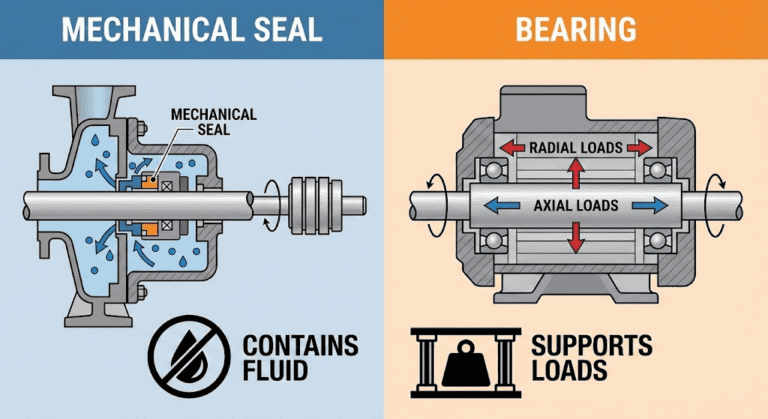Are you struggling to maintain your mechanical seals, leading to reduced equipment lifespan and costly downtime?
Dirty mechanical seals can cause leaks, contamination, and premature failure, resulting in lost productivity and expensive repairs.
In this blog post, we’ll provide a step-by-step guide on how to properly clean and maintain your mechanical seals, helping you extend the life of your equipment and minimize costly interruptions to your operations.

Step 1: Prepare the Work Area
Before beginning the process of cleaning a mechanical seal, prepare a clean, well-lit work area. Lay out a clean cloth or paper towels on a flat surface. Gather the necessary tools and materials, such as a soft brush, cleaning solvents, compressed air, lubricant, and a magnifying glass for inspection.
Step 2: Disassemble the Pump Seal Chamber
Carefully disassemble the pump seal chamber following the manufacturer’s instructions. Remove the seal from the pump shaft, taking note of the order and orientation of each component. Place the seal components on the clean cloth or paper towels in the order they were removed.
Step 3: Clean the Pump and Seal Cavity
Using a soft brush and an appropriate cleaning solvent, thoroughly clean the pump and seal cavity. Remove any debris, corrosion, or buildup that may have accumulated. Be sure to follow the manufacturer’s recommendations for cleaning solvents to avoid damaging the pump materials.
Step 4: Clean the Shaft and Seal Housing
Next, clean the pump shaft and seal housing with a soft cloth and cleaning solvent. Inspect the shaft for any signs of wear, scratches, or damage. If the shaft is damaged, it may need to be repaired or replaced before reassembling the seal.
Step 5: Clean the Seal Faces
Clean the seal faces with a soft, lint-free cloth and an appropriate solvent. Be gentle when cleaning the seal faces to avoid scratching or damaging the polished surfaces. If the seal faces show signs of wear, pitting, or damage, the seal may need to be replaced.
Step 6: Rinse the Seal
After cleaning the seal components, rinse them thoroughly with clean water or a suitable solvent to remove any remaining debris or cleaning agents. Make sure all components are completely free of contaminants before proceeding.
Step 7: Dry the Seal
Use clean, lint-free cloths or compressed air to dry the seal components thoroughly. It’s essential to ensure that all parts are completely dry before reassembling the seal to prevent contamination and ensure proper function.
Step 8: Inspect the Seal
Using a magnifying glass, carefully inspect all seal components for signs of wear, damage, or contamination. Pay close attention to the seal faces, springs, and elastomers. Replace any damaged or worn components as necessary.
Step 9: Lubricate the Shaft
Before reassembling the seal, lubricate the pump shaft with an appropriate lubricant as recommended by the seal manufacturer.
Step 10: Reassemble the Seal
Carefully reassemble the mechanical seal following the manufacturer’s instructions. Make sure each component is installed in the correct order and orientation. Once the seal is reassembled, reinstall it into the pump and perform any necessary testing or adjustments as recommended by the manufacturer.




